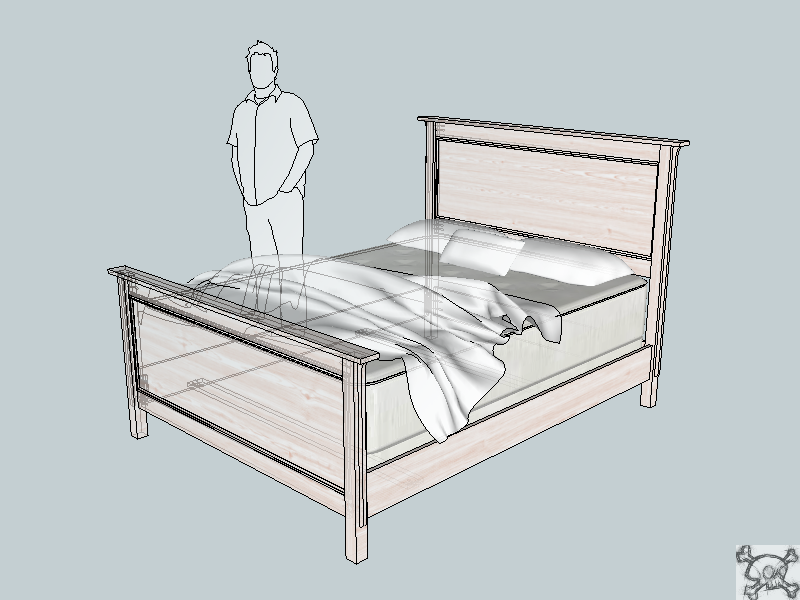Bed Project
-
I was wondering if anyone has ever drew something in SU, built it, showed it to friends and they have you build them one just like it only to find theirs came out better. Would that be consider a good thing or a natural learning process for a beginning woodworker?

-
I think like anything--even drawing in SketchUp, the second time you do something, it tends to be better. You find better ways to do it or whatever. The second time around there are fewer surprises and you've built on your previous experience. For me, being an experienced woodworker, once I've drawn a SketchUp model of a project, going to the shop to build it is like building it for the second time. I've worked out the issues while drawing the project so they don't crop up later.
As to just learning the woodworking, doing is the best. Gary Rogowski, a professional woodworker starts every day in his shop with cutting a quick dovetail joint by hand in some small scraps. He has stacks of scrap expressly for this purpose. He takes two pieces in the morning, lays out a joint, cuts it and tosses it into a box. He's developed muscle memory for how he holds the saw and the chisel. Don't worry that every time you go to the shop you have to come out with a piece of furniture. Study the tools, think about how to maintain safety--the count coming out should be the same as when you go in. Just like you can't become proficient at using SketchUp by reading a book, or flying an airplane by watching a movie, you can't become good at woodworking without making little pieces of wood out of big ones and some sawdust.
By the way, that's a nice looking bed. How about some photos?
-
@unknownuser said:
For me, being an experienced woodworker, once I've drawn a SketchUp model of a project, going to the shop to build it is like building it for the second time. I've worked out the issues while drawing the project so they don't crop up later.
I absolutely agree and so do many MANY other woodworkers. I wish I had this software in highschool when i was last particularly active in actually making things.
When you are familiar enough with a tool, its easy to visualize how your cuts will be made. I can only imagine how true this is for those with more experience than I have. This means you can essentially go over the entire build process WHILE you design it.
-
Thanks Dave for the advice like always I'll put it to practice. I guess you never stop learning and thats what makes life fun. The only thing I really had problems with were the legs and I say problems because I haven't glued to much stuff up before. I took three 3/4" x 3" pine boards and cut them down to make the 2 1/4" square post. I had problems with keeping them all flush as I clamped them together. For the second bed I bought more clamps and it was alot easier and was alot less sanding! I guess the old saying " you can never have enough clamps" holds true. Below are a couple pics of the first bed.Thanks again!
-
Very nice looking bed.
As for the glue up issue, you're right. You can never have too many clamps. One thing you could do to help with alignment is to drill a couple of holes for short dowels for alignment. Once you glue them in, they'll be like the rest of the wood. Another thing would be to leave the pieces a little long--you should do that anyway when gluing up like that--and using small nails driven in and their heads cut off. These will prevent the pieces from sliding while the glue is wet and they can be cut away when the piece is trimmed to length. Just make sure you know where they are so you don't hit them with the saw.
If you have access to a jointer, you could just leave the pieces over wide, too. Then, after gluing up you can true all the faces.
Advertisement







